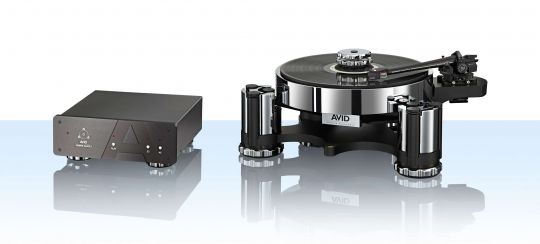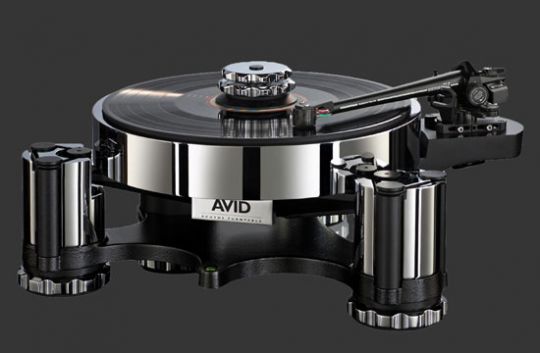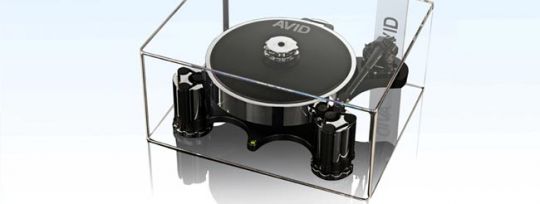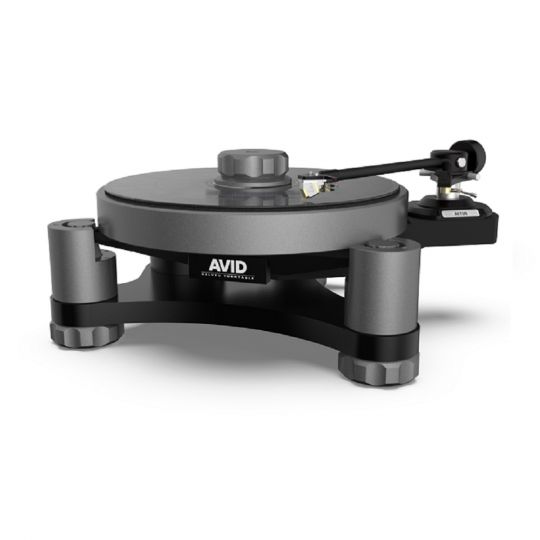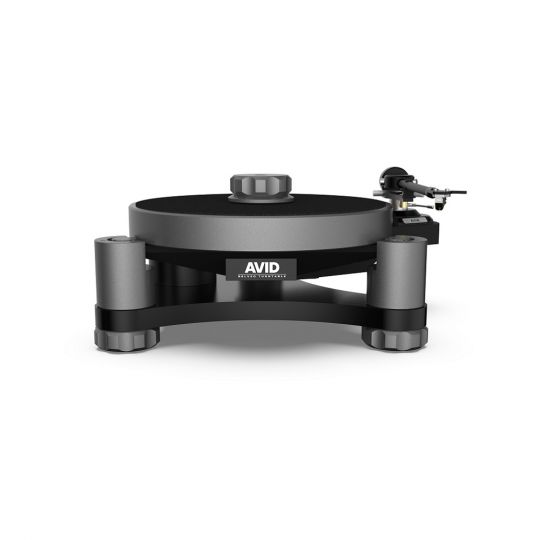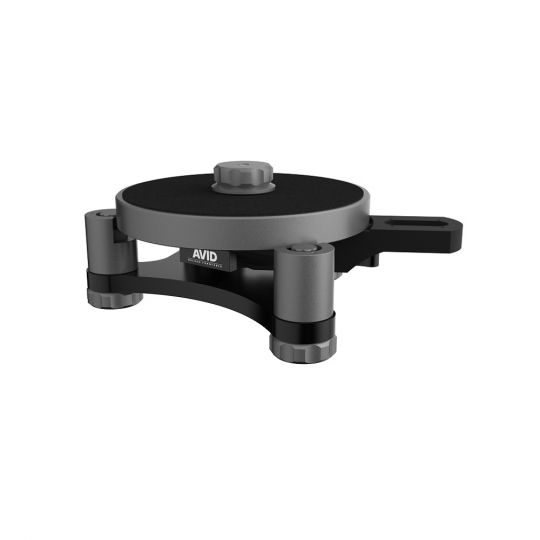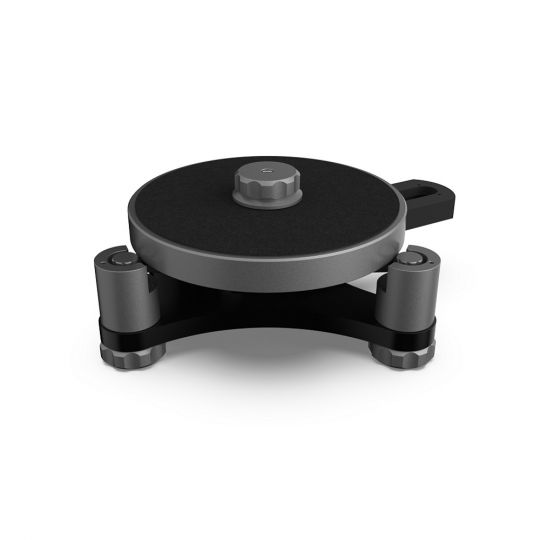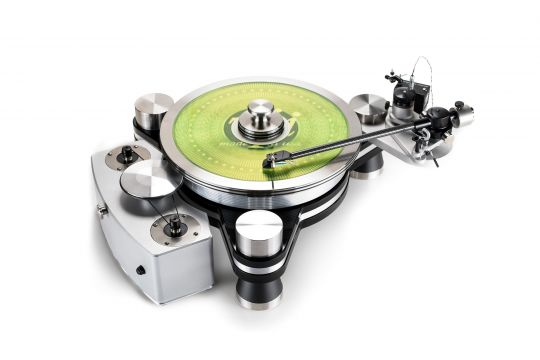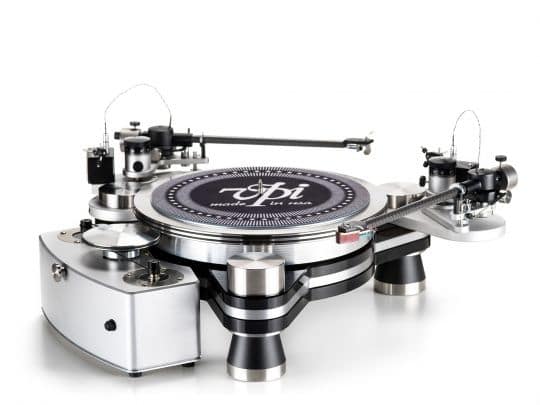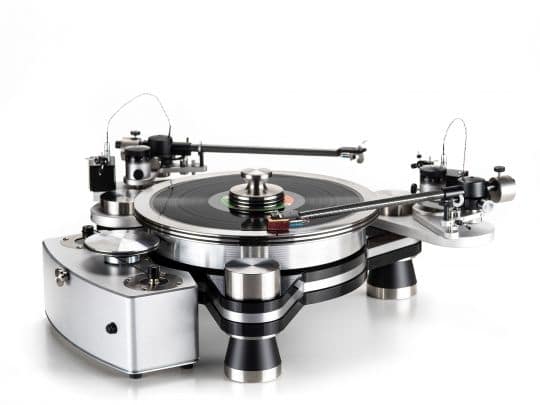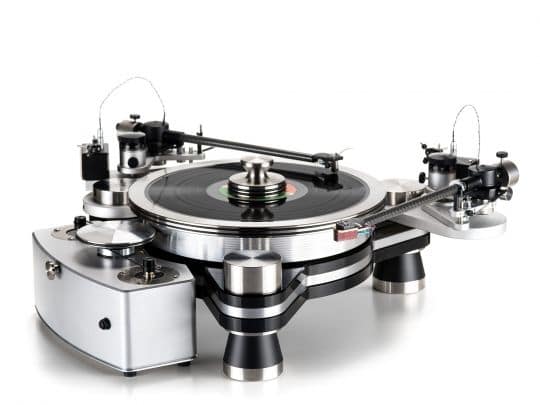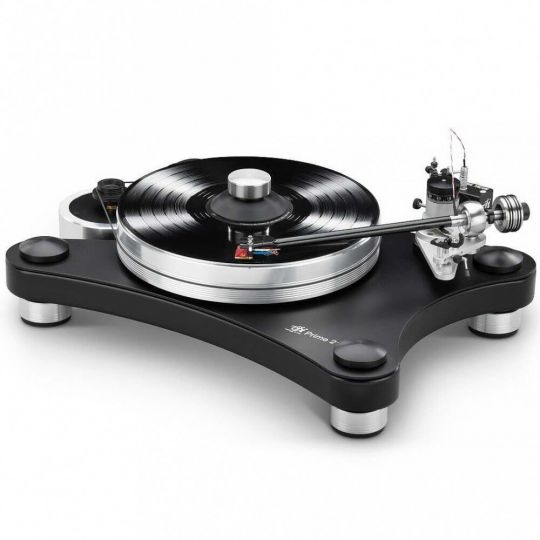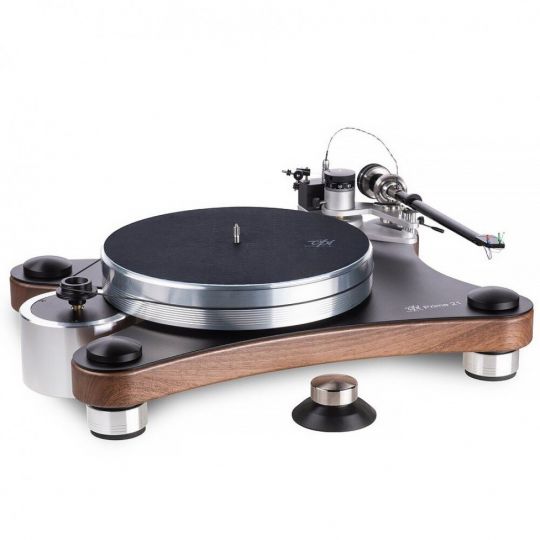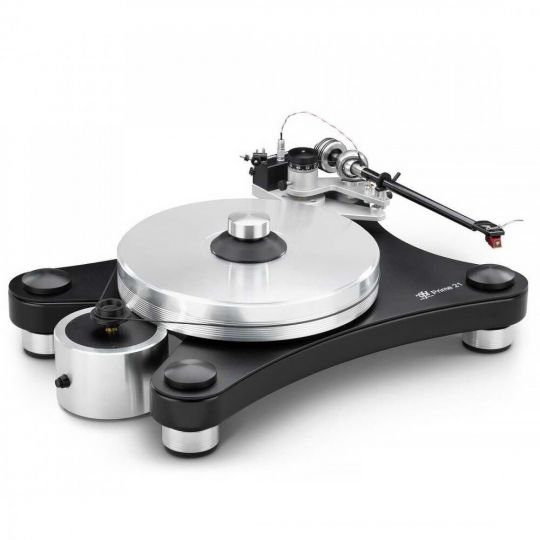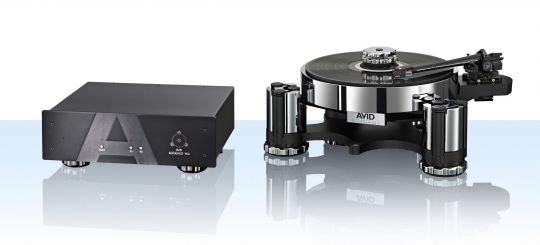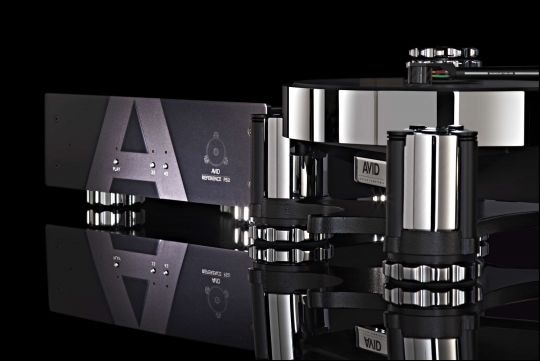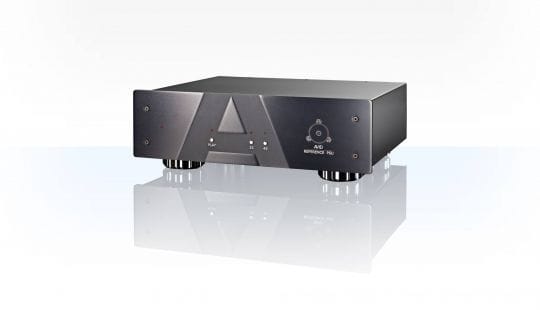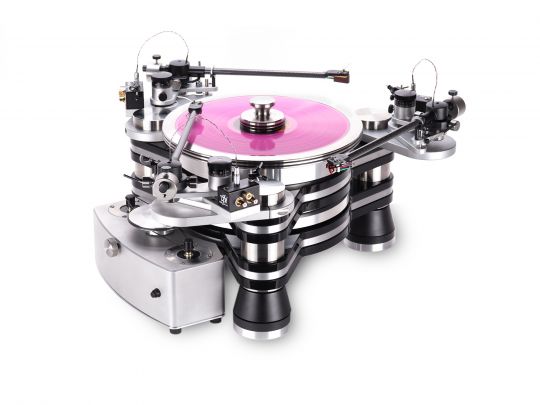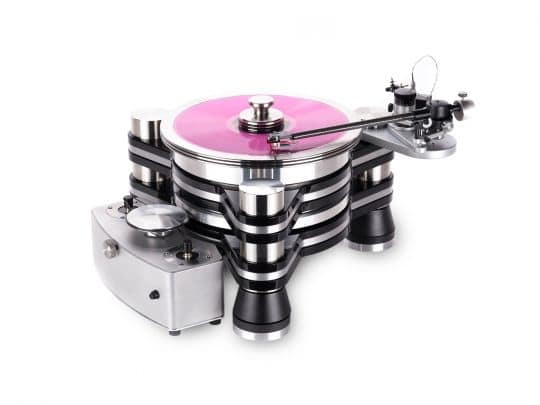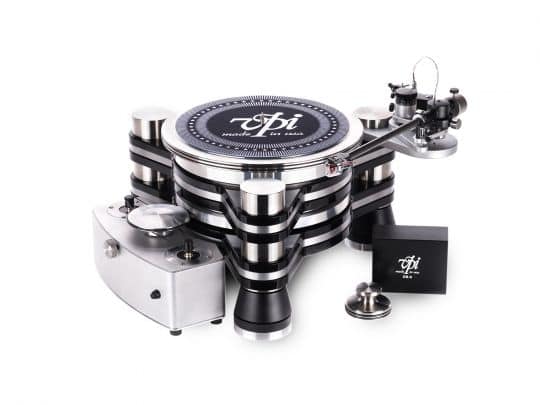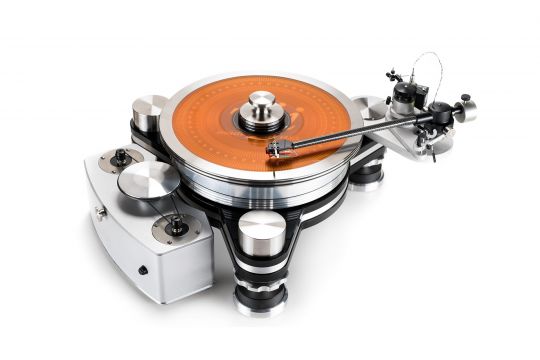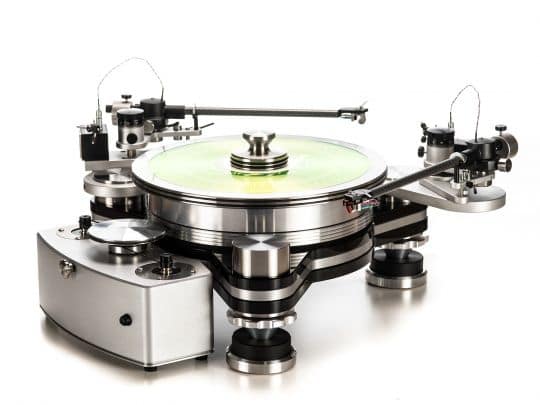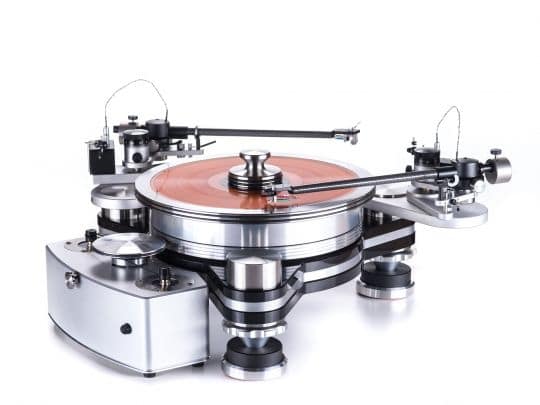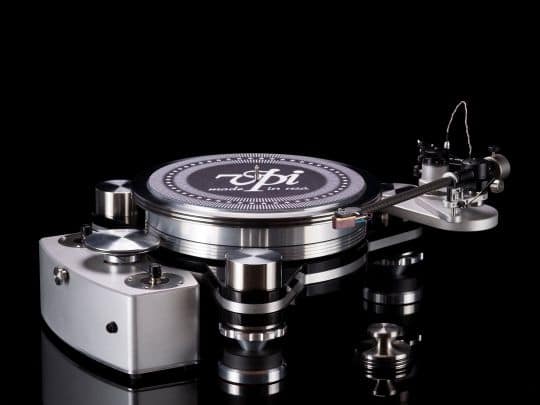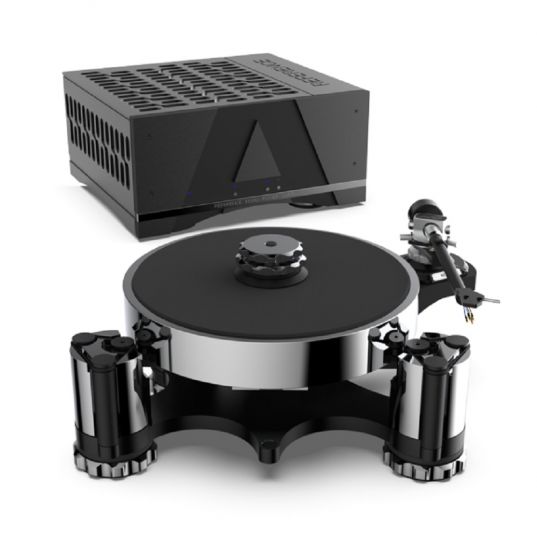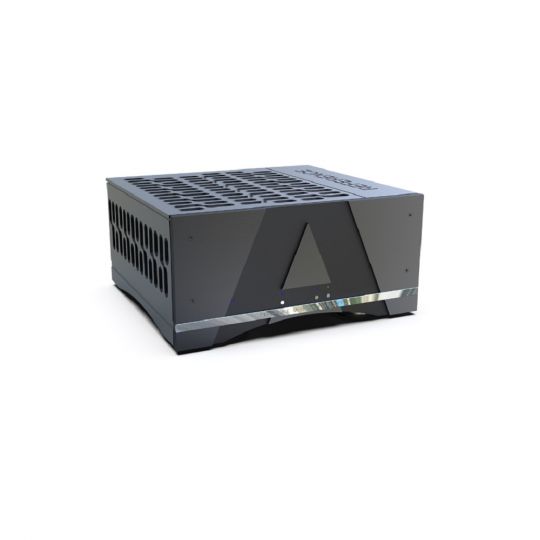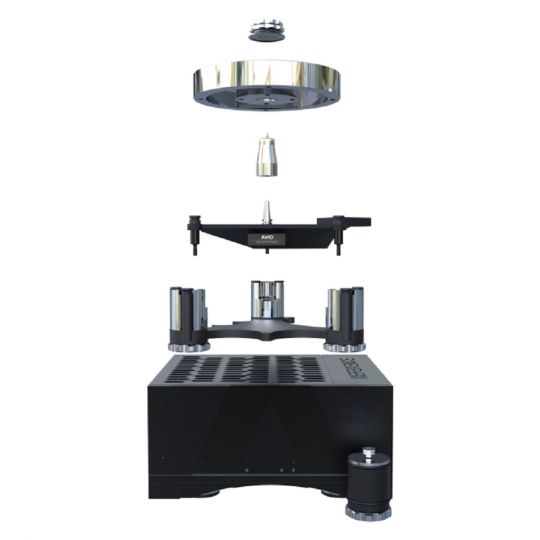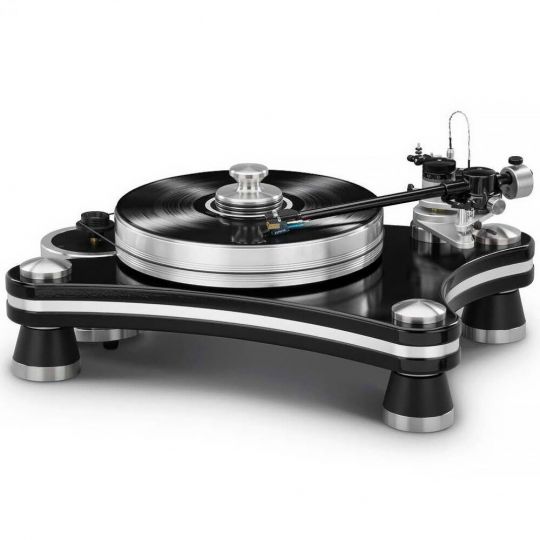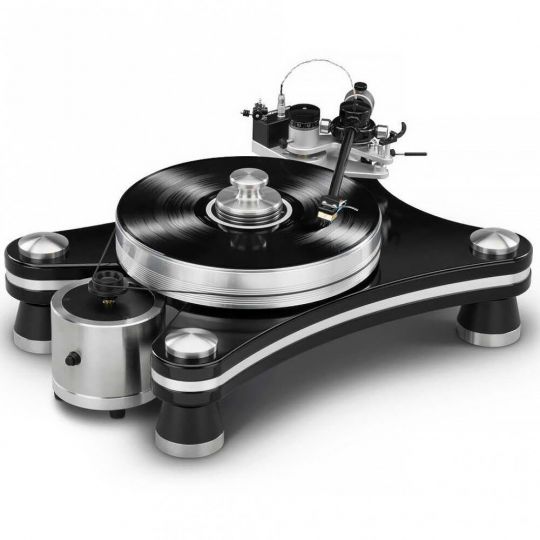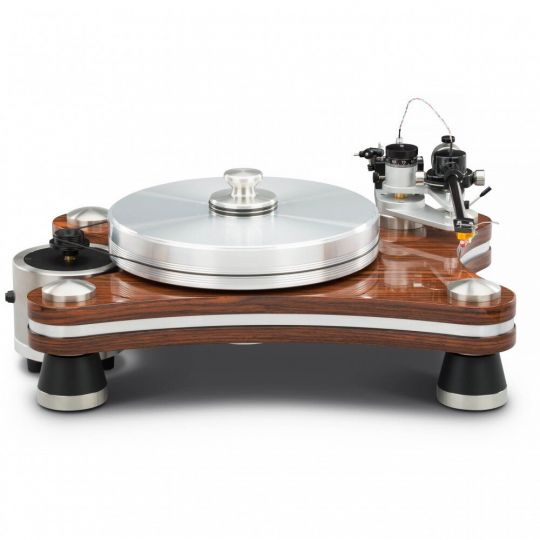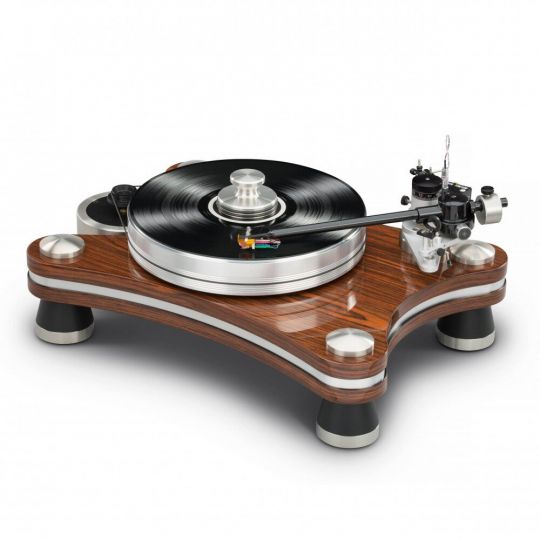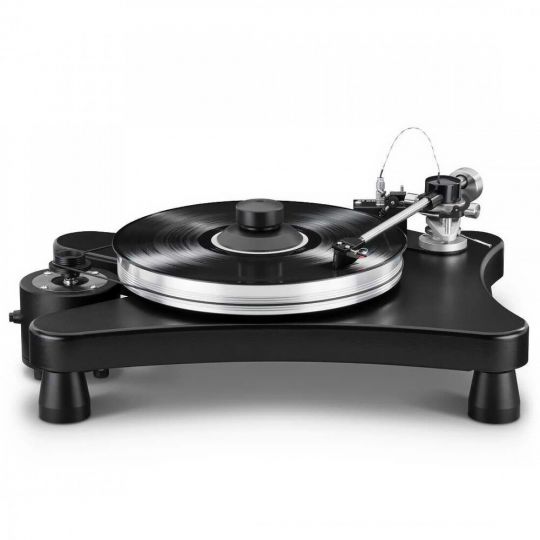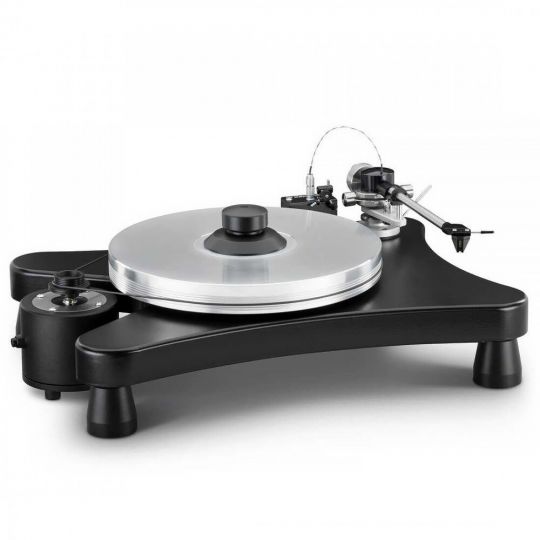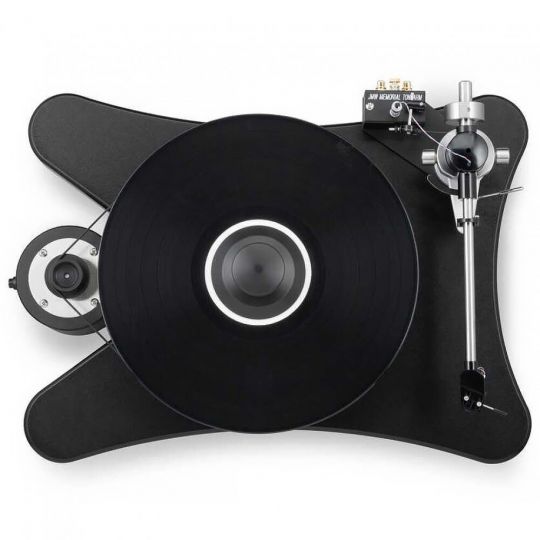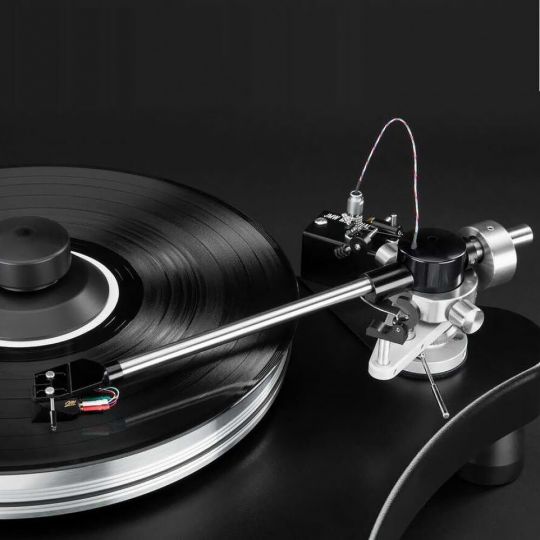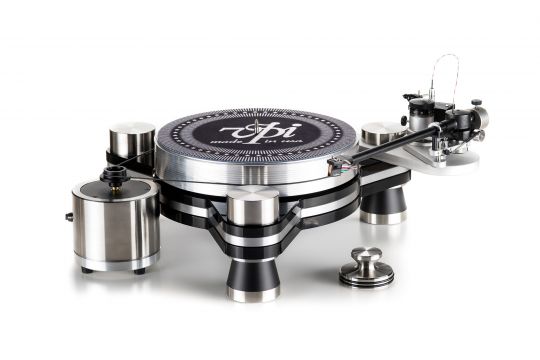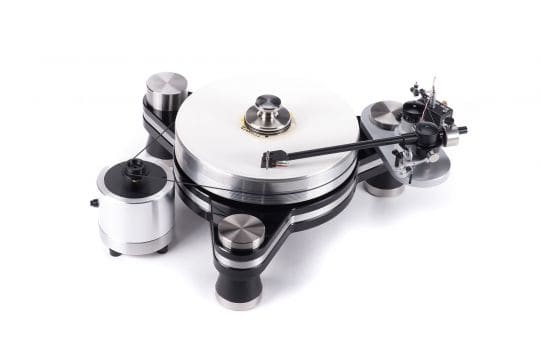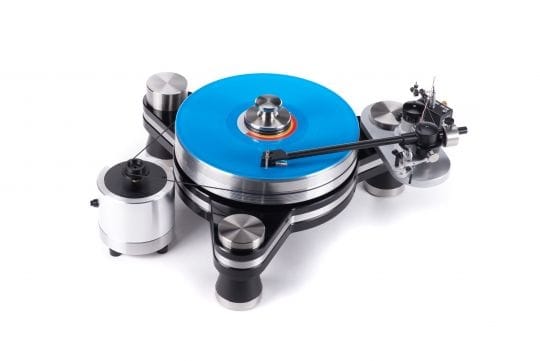- You do not have any products in your shopping cart yet.


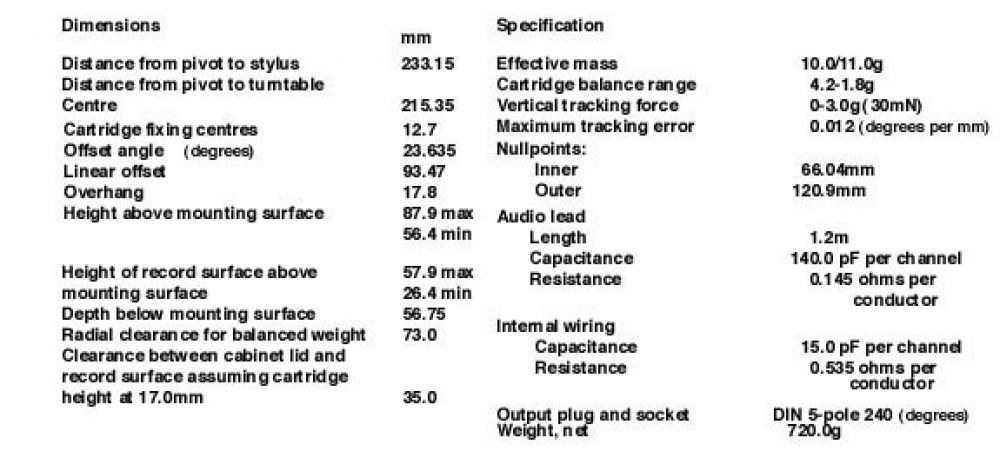



SME Series V Tonearm
SME Series V Tonearm, Ultra High-End 9" Reference Pick-Up Arm.
Description
SME V Tonearm
SME engineers, recognising the potential of the latest complementary equipment, accepted the challenge to design and build a pick-up arm which unlike others in existence would make no detectable sound contribution of its own. The work took almost four years and the measure of its success is the acceptance of the Series V precision pick-up arm by technical experts and users as one of the world's truly great audio products.Series V sound has an almost startling dynamic range and neutrality enabling high levels to be enjoyed. It escapes the 'LP' sound and demonstrates that structural resonances in pick-up arms are responsible for much that makes vinyl records readily discernible from master tapes.
The functioning of a pick-up arm appears simple but is in fact very complex. All cartridges employ relative motion between armature and stator portions of a generating system to produce the signal output. Reproduction can only be true therefore when all movement representing groove modulation is made by the armature to which the stylus cantilever is attached and none by the stator represented by the cartridge body. Unless the pick-up arm holds the latter against even the minutest movement at audio frequencies the signal will be modified in some way. The result is a subtle loss of clarity, dynamic range and transient attack that can make the sound from even the best system tiring to listen to.
The following notes will help a better understanding of the problems and how they were resolved in this radically new design.
In common with any mechanical device the behaviour of a pick-up arm is governed by three properties of matter that also define the laws of motion. The first property is mass which opposes any change in motion. The effective mass of an arm and cartridge resists motion least at low frequencies but increasingly as frequency rises. It is this resisting force which makes the operation of a cartridge possible. At subsonic frequencies the armature and stator move as one allowing the slow movements needed to negotiate the record surface without generating a signal. At audio frequencies however the increased resisting force causes the armature to move relative to the stator and a signal is produced. The transition point between these two conditions is important for a clean low frequency response and is established by the compliance of the cartridge and the total effective mass of the arm and cartridge body.
The second property is stiffness which resists bending or flexing. It is a restoring force, proportional to position or deflection.
The second property is stiffness which resists bending or flexing. It is a restoring force, proportional to position or deflection.
The third property is damping or resistance to motion. Here motion means velocity and without it there is no damping. The total equation of force acting on a pick-up arm is therefore the sum of three parts: acceleration acting on the mass, velocity acting on the internal or applied damping, and bending or deflection acting on the stiffness.
Mass and stiffness determine how much a pick-up arm will flex and vibrate and damping determines how long it will vibrate. Damping alone cannot prevent flexing or vibration, it can only lessen its effect. The stiffer the arm the less it will flex and vibrate; the more massive the less it will vibrate.
Very high tone arm mass would therefore be ideal to control the cartridge had it not to be strictly limited to preserve the required relationship of compliance and mass already referred to. Stiffness, the second part of the equation of force, must therefore be used also. Infinite stiffness would be ideal but we have to be more realistic. In a beam of given length stiffness is dependent on the material used, its cross-sectional area and in the case of a cylindrical beam increases as the cube of its diameter. Doubling the diameter will make it eight times as stiff.
Although the proportions of the Series V tone-arm reflect these facts, tests showed that the required stiffness was still unattainable using conventional fabricated construction. A one-piece die-casting in magnesium alloy was therefore adopted comprising the shell, tube and balance weight cantilever. 36% lighter but only 25% less stiff than commonly used aluminium, a magnesium arm of the same mass could be as much as 25% stiffer. In addition die-casting would allow the numerous changes of section required to optimise effective mass and control standing wave effects. Finally magnesium's high self-damping factor was augmented with an internal constrained layer to damp the tubes’ high frequency resonance.
The Series V's excellent vibration analysis results owe much to the high stiffness and damping of its tone-arm, but stiffness to be of value must refer to something rigid. Tests disclosed the many points at which rigidity could be lost so all other principal parts were pressure die-cast allowing each to be tailored precisely for its purpose and utilising the high mass of zinc-based alloy to damp out vibration. Ultra-high quality 10mm and 17mm ABEC 7 radial shielded bearings were selected to provide low friction vertical and lateral movements, while holding the tone-arm motionless against front/back and torsional forces. The support afforded by these large, wide contact angle bearings, excludes the possibility of chatter and wear or damage in normal use.
The horizontal axis bearings carry the tone-arm in a substantial yoke also housing a spring tracking force mechanism. The bearing axis is at record mean level to minimise warp-wow effect and the spring, a possible source of coloration, is resonance controlled.
The main pillar is 23mm diameter, machined from steel, heat treated, ground and honed. It houses the vertical shaft and bearings, and carries the control bracket incorporating the anti-skate mechanism, lowering/raising control and motion damper.
The base is highly original. The pillar moves vertically between two jaws and horizontally between two slideways. Locking is effected by transverse clamp bolts, spring loaded to maintain settings when released. The design ensures extremely positive clamping maintaining the rigidity of the assembly which is then secured to the mounting surface of the deck with four cap-head screws.
The weight housing is undersung to correct its centre of gravity and provide a vibrationally non-reflective termination of the tone-arm. A damped two-point suspension carries the tungsten-alloy balance weight . Its unique shape enables it to be positioned close to the fulcrum reducing inertia to minimise the effects of record warp and eccentricity.
Movement is made along mitre-ways by rotating a thumb wheel and leadscrew carried in twin ball races. Only l9mm of travel is required to cover the whole balance range and a lever effects clamping in any position.
Electrical aspects received no less attention. The internal wiring is of specially developed silver litz, each conductor having five insulated strands. The damped output-socket swivels allowing it to take up its own position for installation and to minimise vibration transmission when used on a sub-chassis. The high quality linear crystal oxygen-free copper audio lead selected for its electrical and mechanical characteristics is terminated at one end with SME right-angle 5-pole DIN contra-plug and gold-plated phono plugs at the other.
The magnesium tone-arm is finished in satin black enamel, other major parts in black chrome with details in bright chrome and polished stainless steel. Each unit is complete with tools, accessories, and an advanced drill jig/template and alignment system simplifying mounting and exact placing.
Structurally inert the Series V embodies every worthwhile feature in a pick-up arm. As part of a complete system working in concert with a comparable turntable and cartridge it will provide wide range transparent reproduction of vinyl L.P's, bringing the listener audibly closer to the clarity and dynamics of the original performance.
SME V Features
- Unique one-piece pressure die-cast tone-arm utilising the advantages of magnesium, replace conventional fabricated construction.
- Internal constrained layer damps minute residual vibration leaving the tone-arm acoustically inert.
- Fine machined cartridge platform, enamel free to avoid interface resonance.
- A Stainless steel cross shaft, ground and thread ground. Carried in massive yoke on 10mm ABEC 7 ball races. Axis at record mean level to minimise warp-wow.
- Dynamic balance graduated vertical tracking force (VTF) control applies 0-3g x 0.125g through resonance controlled spring.
- Unique assembly gives high rigidity and allows bearings to be critically adjusted before tone-arm is fitted.
- Stainless steel vertical shaft, ground and thread ground, with integral 16mm diameter flange to couple shaft and yoke.
- 23mm diameter steel pillar, heat treated, ground and honed, carries two 17mm ABEC 7 ball races, widely spaced to resist tilt.
- Anti-skate control operates through tension spring and filament. Dial corresponds with VTF and has positive OFF position.
- Lowering/raising control gives smooth positive action. Height of lift can be adjusted.
- Subsonic lateral mode fluid damper can be instantly adjusted or cancelled.
- Dual-lock base provides movement control with high rigidity.
- Tungsten-alloy balance weight carried on damped two-point suspension. Extra-low inertia design assists warp riding.
- Underslung weight housing corrects centre of gravity and provides non-reflective tone-arm termination. Adjustment leadscrew journalled in twin ball races with lever clamping.
- Swivelling damped output socket minimises vibration transmission in sub-chassis use.
- Fine adjustment of arm height (VTA).
- Reference lines on tone-arm facilitate VTA setting.
- Fine adjustment of horizontal tracking angle (HTA).
- New design alignment protractor sets HTA with greater accuracy.
- Advanced jig/template system guarantees correct positioning.
Customer reviews
Unfortunately there are no reviews yet. Be the first who rates this product.

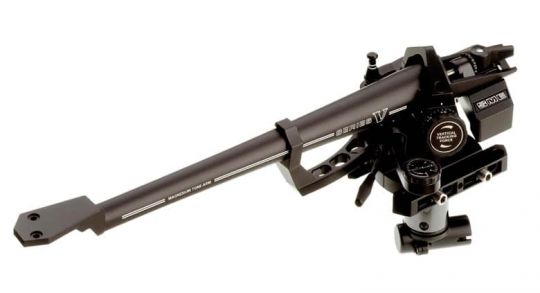


.jpeg)
